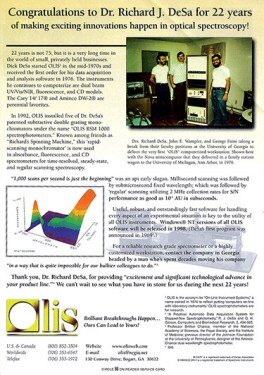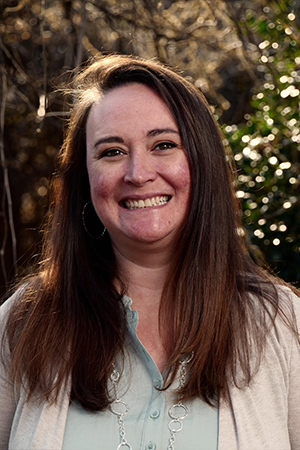A Biased View of Uv/vis/nir
Wiki Article
The Best Strategy To Use For Circularly Polarized Luminescence
Table of ContentsSome Known Factual Statements About Circular Dichroism Circularly Polarized Luminescence - TruthsMore About Circularly Polarized LuminescenceNot known Facts About Uv/visThe 10-Minute Rule for Circular Dichroism

Although spectrophotometry is most commonly used to ultraviolet, visible, and infrared radiation, contemporary spectrophotometers can interrogate broad swaths of the electro-magnetic spectrum, including x-ray, ultraviolet, noticeable, infrared, and/or microwave wavelengths. Spectrophotometry is a tool that depends upon the quantitative analysis of particles depending upon just how much light is soaked up by colored compounds.
Not known Details About Uv/vis
A spectrophotometer is typically utilized for the measurement of transmittance or reflectance of options, transparent or nontransparent solids, such as refined glass, or gases. Numerous biochemicals are colored, as in, they take in visible light and therefore can be measured by colorimetric treatments, even colorless biochemicals can typically be transformed to colored substances suitable for chromogenic color-forming reactions to yield substances suitable for colorimetric analysis.: 65 However, they can also be designed to determine the diffusivity on any of the noted light varieties that generally cover around 2002500 nm using different controls and calibrations.An example of an experiment in which spectrophotometry is utilized is the determination of the stability constant of an option. A particular chemical response within a service might occur in a forward and reverse instructions, where reactants form products and products break down into reactants. At some point, this chemical reaction will reach a point of balance called a balance point.
An Unbiased View of Circular Dichroism
The amount of light that goes through the option is indicative of the concentration of certain chemicals that do not enable light to pass through. The absorption of light is because of the interaction of light with the electronic and vibrational modes of particles. Each kind of particle has an individual set of energy levels associated with the makeup of its chemical bonds and nuclei and hence will soak up light of specific wavelengths, or energies, resulting in unique spectral properties.
The usage of spectrophotometers spans different scientific fields, such as physics, products science, chemistry, biochemistry. UV/Vis, chemical engineering, and molecular biology. They are commonly utilized in lots of industries including semiconductors, laser and optical manufacturing, printing and forensic examination, as well as in laboratories for the study of chemical substances. Spectrophotometry is often used in measurements of enzyme activities, determinations of protein concentrations, decisions of enzymatic kinetic constants, and measurements of ligand binding reactions.: 65 Eventually, a spectrophotometer is able to figure out, depending upon the control or calibration, what substances are present in a target and exactly how visit their website much through computations of observed wavelengths.
Created by Arnold O. Beckman in 1940 [], the spectrophotometer was created with the help of his associates at his company National Technical Laboratories founded in 1935 which would end up being Beckman Instrument Business and eventually Beckman Coulter. This would come as a service to the formerly produced spectrophotometers which were unable to soak up the ultraviolet correctly.
Some Known Incorrect Statements About Spectrophotometers
It would be discovered that this did not provide satisfactory results, for that reason in Model B, there was a shift from a glass to a quartz prism which allowed for much better absorbance results - circular dichroism (https://www.slideshare.net/julieanndesalorenz30). From there, Design C was born with an adjustment to the wavelength resolution which ended up having 3 systems of it producedIt was produced from 1941 to 1976 where the price for it in 1941 was US$723 (far-UV accessories were an alternative at additional cost). In the words of Nobel chemistry laureate Bruce Merrifield, it was "probably the most crucial instrument ever developed towards the advancement of bioscience." Once it ended up being ceased in 1976, Hewlett-Packard developed the first commercially readily available diode-array spectrophotometer in 1979 understood as the HP 8450A. It irradiates the sample with polychromatic light which the sample absorbs depending upon its homes. Then it is sent back by grating the photodiode array which detects the wavelength area of the spectrum. Given that then, the creation and application of spectrophotometry devices has actually increased immensely and has ended up being one of the most innovative instruments of our time.

The Buzz on Spectrophotometers
Historically, spectrophotometers utilize a monochromator including a diffraction grating to produce the analytical spectrum. The grating can either be movable or fixed. If a single detector, such as a photomultiplier tube or photodiode is used, the grating can be scanned step-by-step (scanning spectrophotometer) so that the detector can determine the light strength at each wavelength (which will correspond to each "action").In such systems, the grating is repaired and the intensity of each wavelength of light is measured by a different detector in the range. Additionally, most contemporary mid-infrared spectrophotometers use a Fourier transform technique to obtain the spectral details - https://soundcloud.com/julieanndesalorenz30606. This strategy is called Fourier transform infrared spectroscopy. When making transmission measurements, the spectrophotometer quantitatively compares the portion of light that passes through a referral service and a test option, then digitally compares the intensities of the 2 signals and calculates the percentage of transmission of the sample compared to the reference requirement.

Report this wiki page